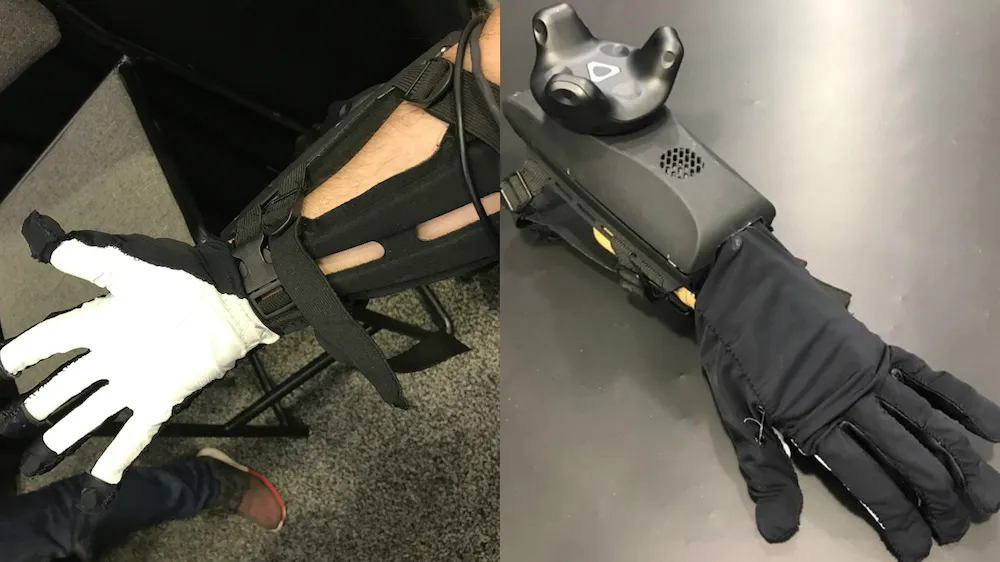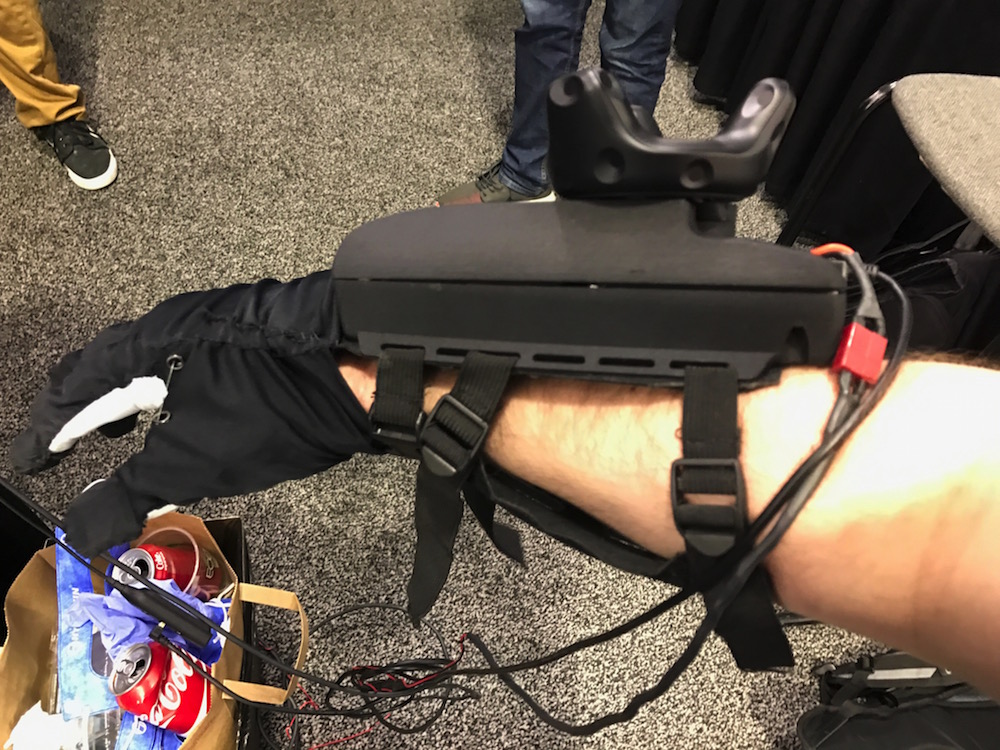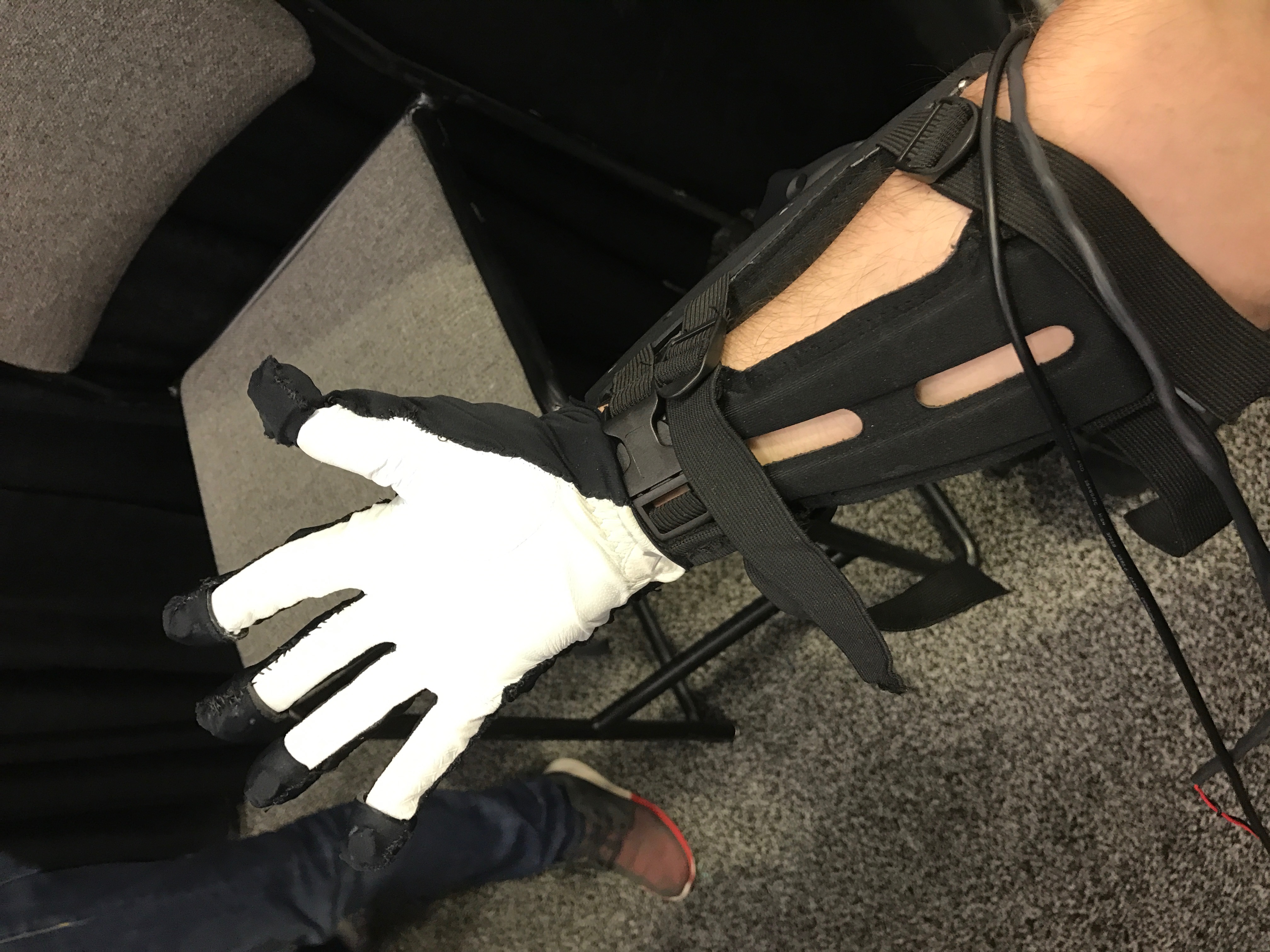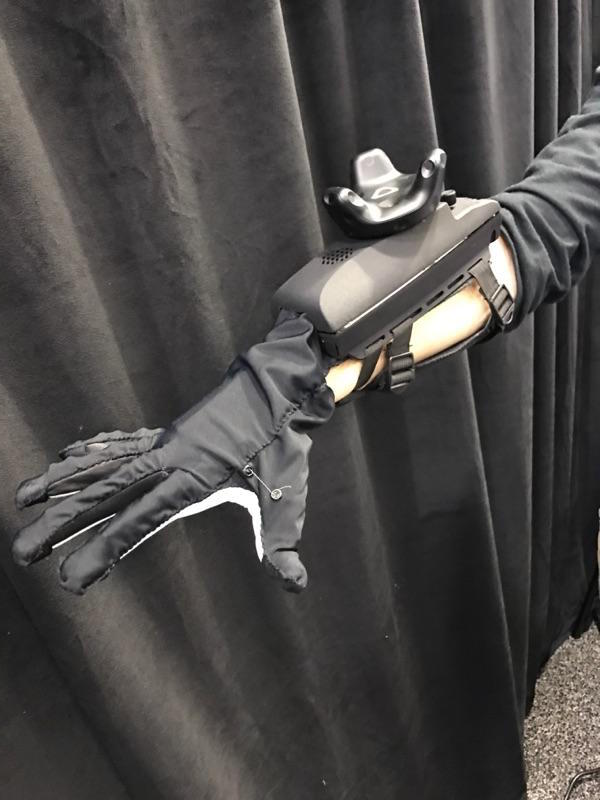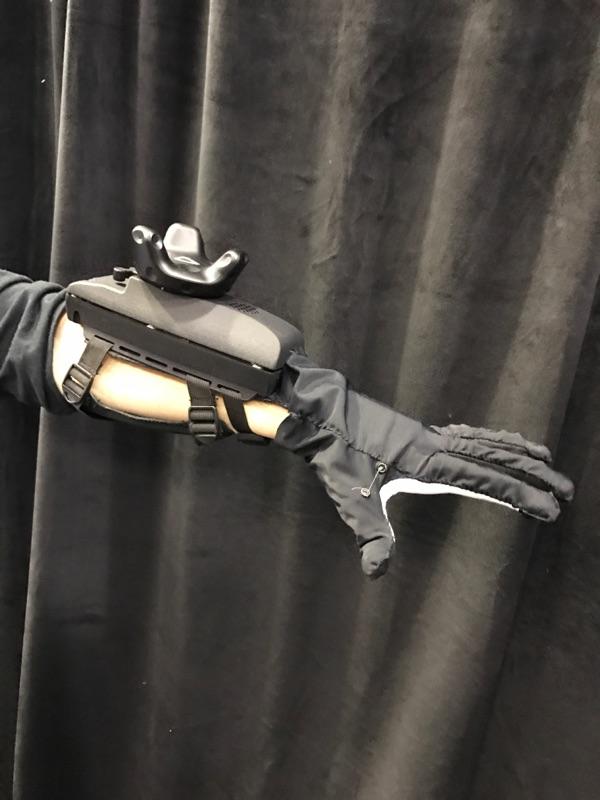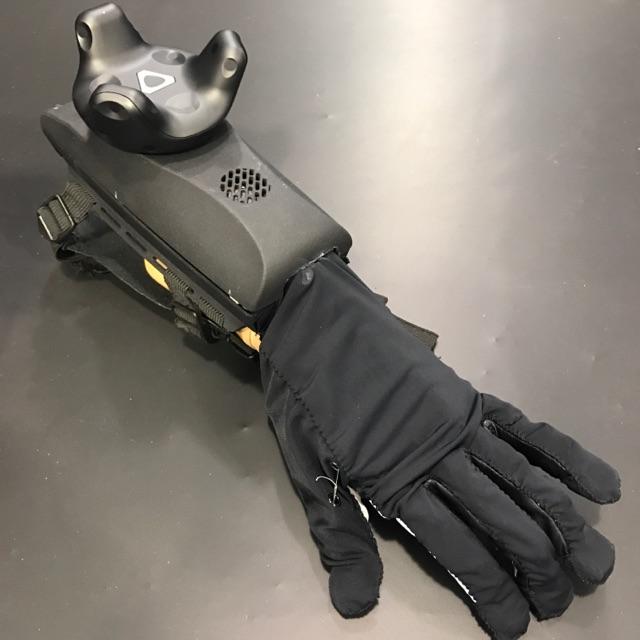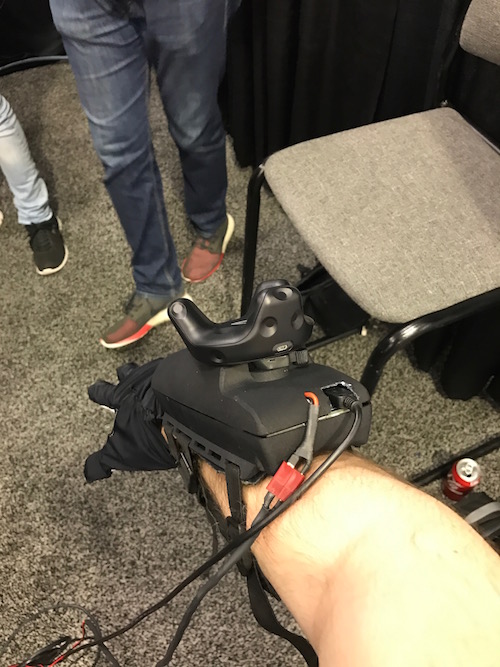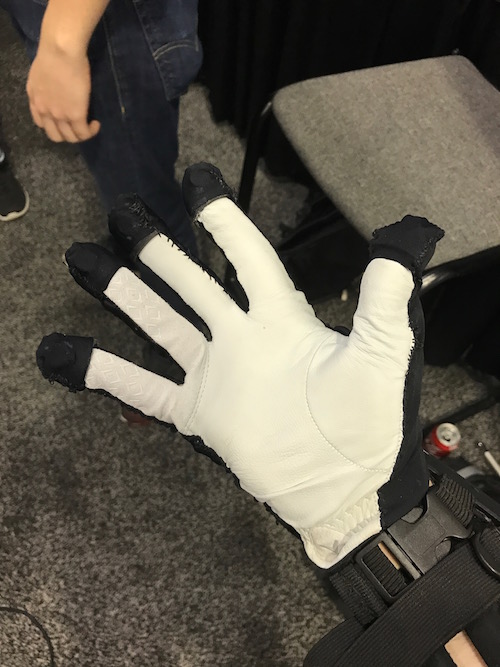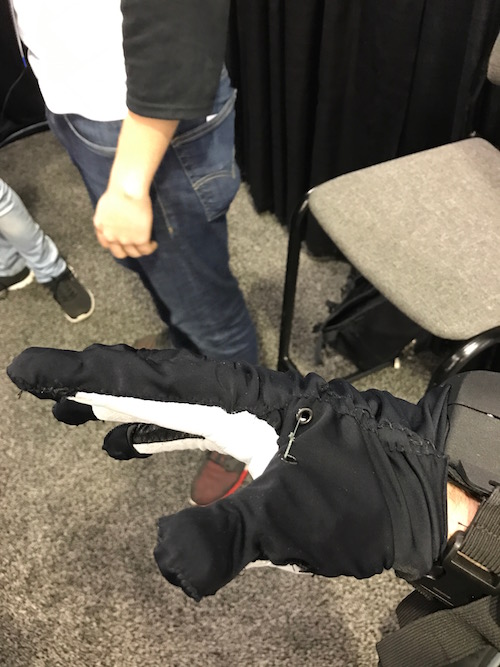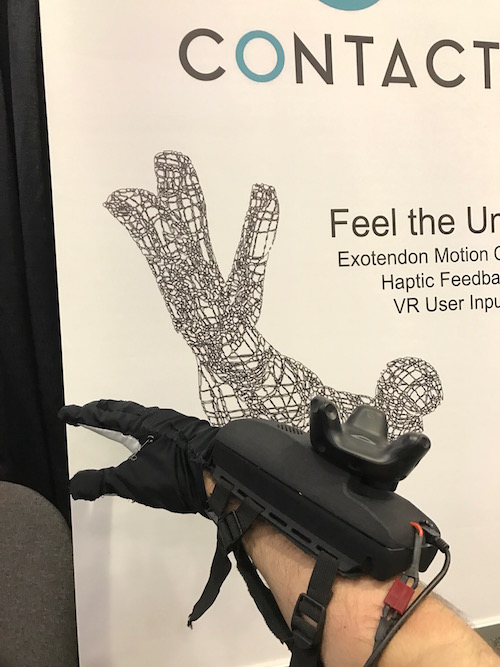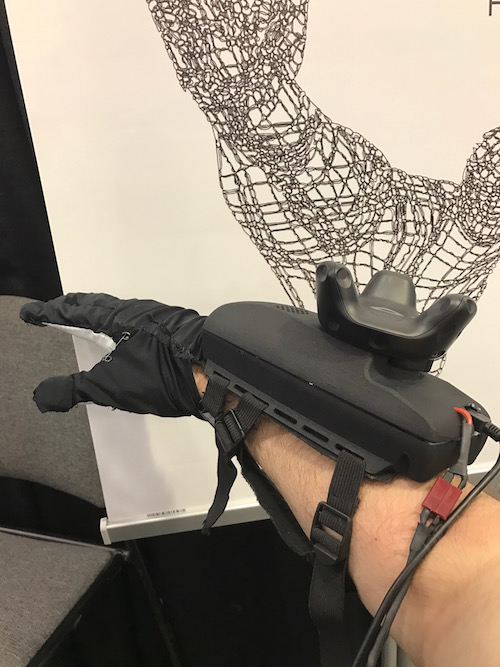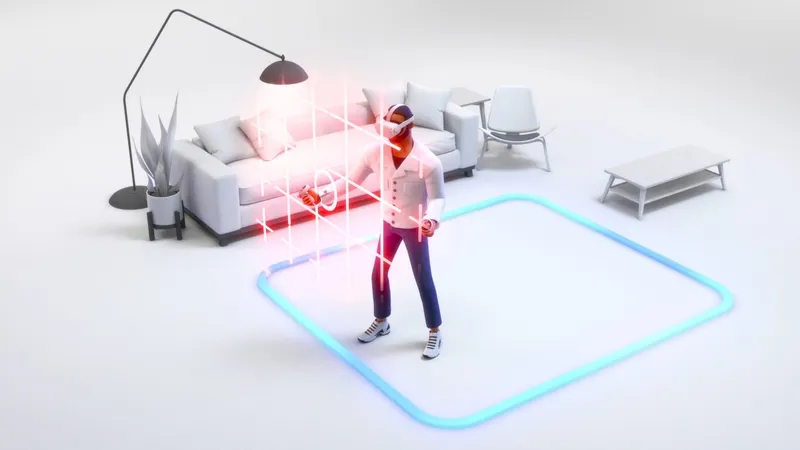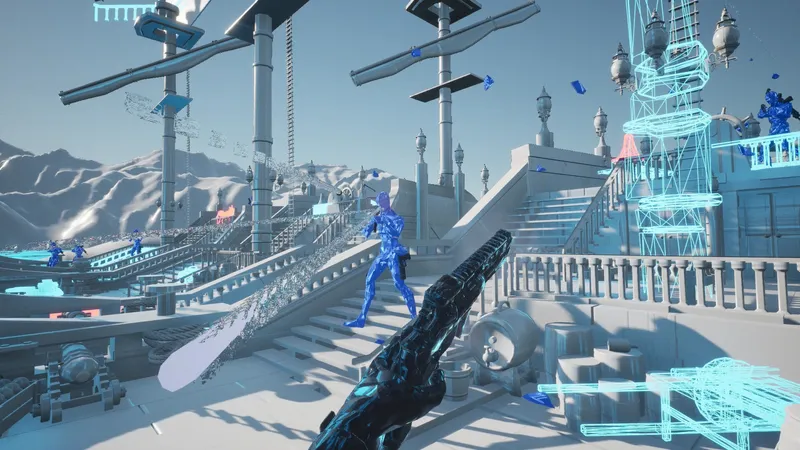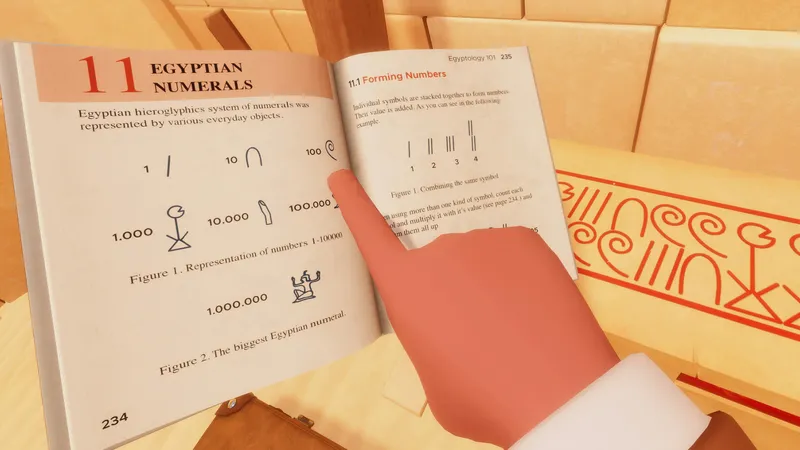Maestro is a prototype haptic system for virtual reality that uses arm-mounted motors to create resistance and a sense of force-feedback in VR. Created by Contact CI, these motors pull off an intricate system of synthetic tendons that have been snaked throughout a retrofitted glove. The glove also contains sensors in the finger tips for additional power and performance features.
UploadVR had the chance to try out the Maestro glove for ourselves. Despite its ambitious design, the system is actually quite light and comfortable. The motors are housed in custom plastic casings that are fitted to your forearms with velcro straps. Once tightened, the whole thing felt snug and secure rather than bulky or obtrusive. The finger caps wrap nicely as well and the glove itself is tight but stretchy. The “tendons” were thin enough that I couldn’t even feel them inside the glove.
The Maestro gloves we used were connected to an HTC Vive and used the recently released Vive Trackers for their 3D orientation. Inside the headset the first step was the setup process. In-experience prompts ask you to execute a number of hand calisthenics to calibrate the system. Fast wrist movements and fist making lead to more fine tuned movements down to the individual finger joints. The Maestro gloves are designed to mimic real hand anatomy as closely as possible and its feedback can be delivered on a segment-by-segment basis throughout each of your individual phalanges.
Once the system is calibrated you’ll feel the slight hum of power that means the motors are ready to do their thing. Maestro can tell where your hands are in a VR experience and when it needs to tell your fingers they need to stop. For example, in my demo there was a bottle. When I went to pick it up the motors pulled back on the tendons in the glove and sent a very clear “Yo! There’s a bottle there,” message to my brain. Similar things happened when I tried to pick up other items or push my index finger past a drawing easel when creating a picture.
The motors aren’t insanely strong either. When combined with the immersive visuals of a VR experience, a small amount of resistance is all it takes to create the illusion of grip or touch. Contact CI representatives informed me that Maestro is designed to be strong enough to create believable sensations, but not so strong that an average person won’t be able to overpower it if needed.
Haptic gloves are becoming more and more prevalent as VR continues to progress and interfaces continue to evolve. Positionally tracked controllers may be the de-facto solution today, but gloves like this have the potential to offer a more feature-rich answer to the question: “How do hands work in VR?”
Contact CI is currently accepting applicants for a closed beta program aimed primarily at developers.

